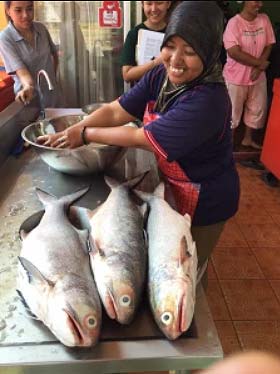
A Thai woman gets ready to process threadfin salmon for the market. Photo: Supaporn Anuchiracheeva, the Small-scale Fishers and Organic Fisheries Products Project.
In bold outline, the take home messages from the GAF6 full report – Engendering Security in Fisheries and Aquaculture – converge on the following: women’s voices and gender equity champions can make a real difference; and a gender lens lets us see inequalities and how to remedy them. These points were woven through the 68 rich and varied presentations, panels, posters and workshops of GAF6. Read the full report here, see the take home messages below.
- Participants were urged to focus on gender relationships, not simply roles, and on intersectionality, as women’s and men’s lives were interconnected and gender interacted with other systems in society, e.g., cultural, political and economic structures.
- The 2014 Small-Scale Fisheries Voluntary Guidelines are opening up new policy space on gender equality. Yet, in implementing the Guidelines, women have been deterred from taking part in decision-making, are invisible in most fisheries statistics and their interests excluded from national policies – unless NGOs and women’s groups have advocated for inclusion. Even when women’s needs are recognized, money and expertise may not have been allocated. In a hopeful sign, some recent projects are committed to gender equality.
- Aquaculture is gendered. Gender roles and relationships in aquaculture follow typical social patterns of ownership, rights and power. Unless they break out as entrepreneurs, women are positioned in small-scale, near-home, and low technology aquaculture, or as low-paid labour in medium and industrial scale operations. Nevertheless, small-scale household aquaculture can fulfill important subsistence roles and be improved to better satisfy food security and nutrition.
- A persistent thread on fair livelihoods in fish value chains was that gender equality and equity must be fought for, and protected by active measures, rather than expecting it to happen through a sense of natural justice.
- Using a gender lens brings deeper understanding of climate and disaster adaptation. Flexibility, versatility and agency are keys to people’s resilience. Gender-blind efforts to help people adapt should always be challenged.
- Real progress in securing gender equality will not be achieved unless social norms are transformed.
Read the whole GAF6 report here – Link
